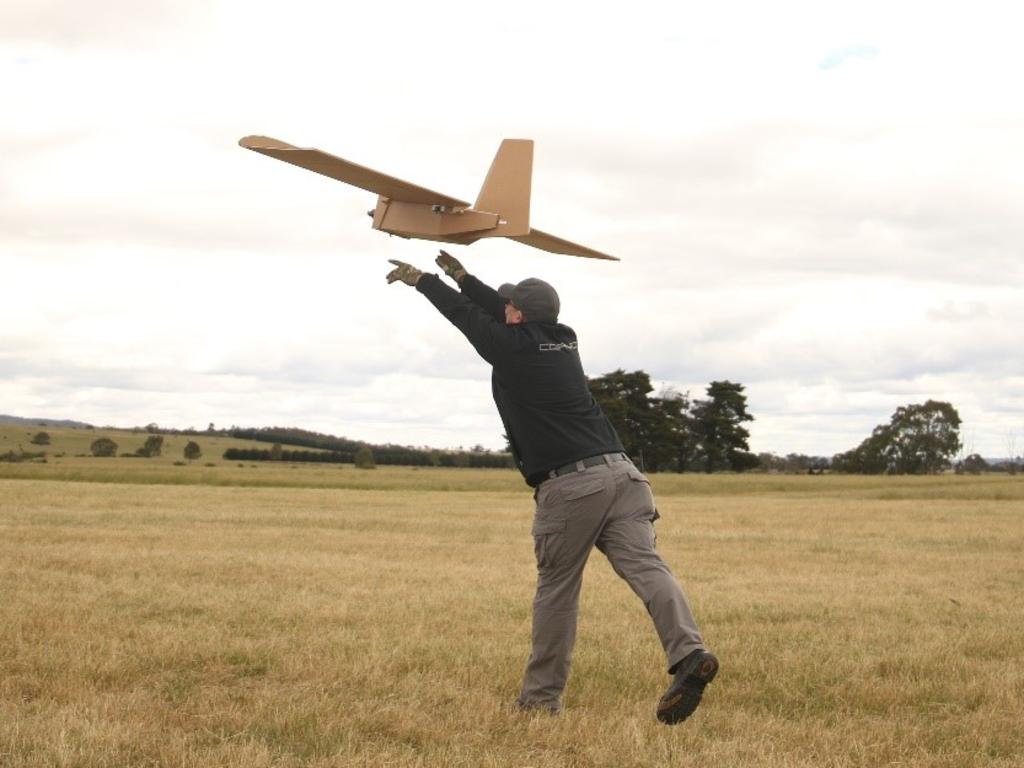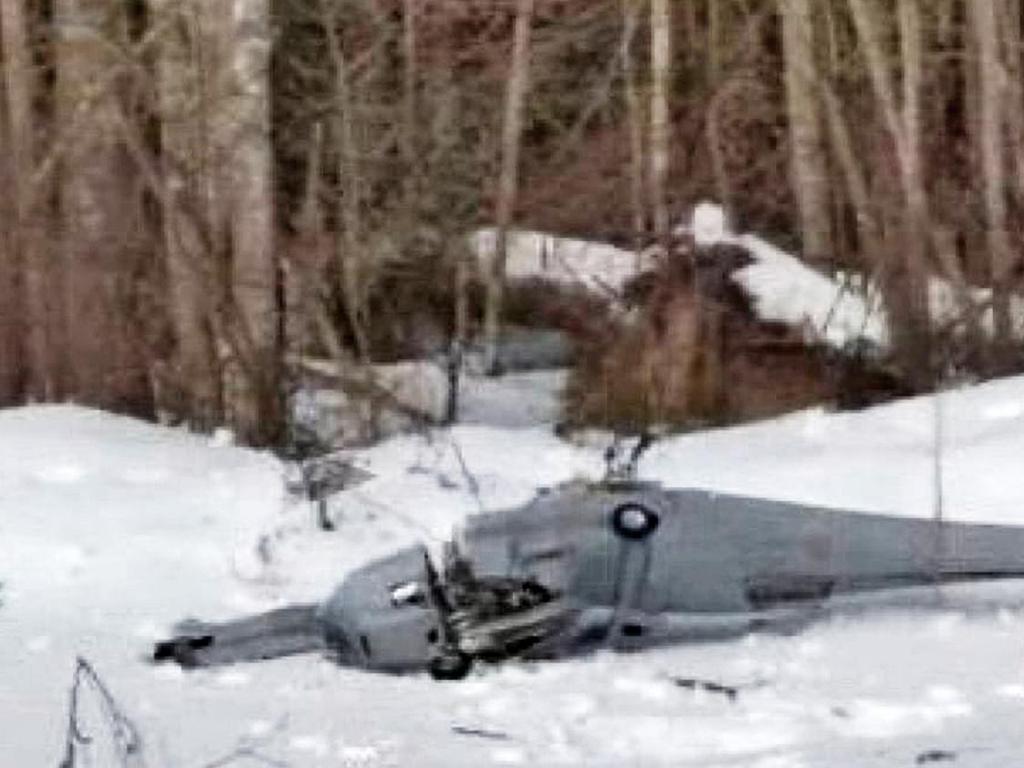Ukraine war: The two game-changing moves that could escalate conflict
The prospect of Beijing giving military support to Russia has turbocharged the debate over whether the West should provide fighters.

The debate over the second is increasingly linked to the first as the prospect of Beijing giving direct military support to Russia has turbocharged the debate over whether the West should abandon its refusal to provide fighters and long range missiles to Ukraine.
The Biden White House invested a lot of capital this week in warning Beijing not to follow through on its reported deliberations about providing artillery and drones to Russian forces.
Last month, Washington revealed that China was considering providing “lethal support” to Russia, without spelling out what that meant.
The Wall Street Journal subsequently reported that China was considering supplying artillery and drones, while German magazine Der Spiegel said Russia was seeking at least 100 suicide drones.
Any direct and substantial military support to Russia from China would potentially be a game-changer for Moscow’s troubled Ukraine campaign. It would also plunge relations between China and the West to an unprecedented new low. China has denied that it plans to give military aid to Russia, a denial that Washington has dismissed.
President Joe Biden has warned that the US would “impose severe sanctions” on Beijing if it helped Russia’s war effort. “We would respond,” he said, adding that there was no evidence, as yet, of any military assistance.
This week US Secretary of State Antony Blinken said: “We will not hesitate to target Chinese companies or individuals that violate our sanctions or otherwise engage in supporting the Russian war effort.”
The European Union sounded its own warning to Beijing, with EU foreign policy chief Josep Borrell telling China’s top foreign policy official, Wang Yi, that supplying weapons to Moscow would be a “red line in our relationship”.
Richard McGregor, senior fellow for East Asia at the Lowy Institute, says China is trying to dig itself out of a very deep diplomatic hole with Russia.
“On the one hand, China wants to preserve Russia as its only really powerful partner in its contest with the US. It can’t afford to have Putin fail,” he tells Inquirer. “But it also needs to try to undo the severe damage to its diplomatic standing in Europe and elsewhere that comes from its backing of Russia.”
McGregor doubts that China will follow through on any plan to provide arms, even if Russian President Vladimir Putin wants it. “China would be taking a severe risk in providing military support. It would open itself to US sanctions, blow up the diplomatic beachhead it is trying to re-establish in Europe and further corrode its position with allies of Washington, like Japan.”
Patricia Kim from the Brookings Institution also believes China is unlikely to give direct military support to Russia.
“If China does provide such assistance to Russia it would come with colossal consequences for Chinese relations with the West,” she writes in this month’s Foreign Affairs magazine. “Military co-ordination between China and Russia is likely to remain more performative than geared to actual joint combat.”

Yet China’s claim to be neutral over Ukraine has become ever more absurd. This week, Chinese President Xi Jinping hosted a gala visit to Beijing by Belarusian President Alexander Lukashenko, a staunch ally of Putin. Last month Xi hosted Ebrahim Raisi, the president of Iran – a country that has provided more than 100 suicide drones to Russia.
China’s recent decision to put forward an unlikely peace proposal for the war was made without consultation with Ukraine’s President Volodymyr Zelensky and did not condemn Russia’s invasion.
The mere prospect of China becoming an indirect player in the war in Ukraine has helped fuel what was already a growing debate over the limits to Western military support for Kyiv.
The pattern of this year-long war has been for the West to initially refuse to provide Ukraine with offensive weapons which it feels could risk a broader escalation of the conflict beyond Ukraine’s borders, only to later agree to those weapons. This reversal has been seen most notably with the provision of tanks by European nations and with US-supplied HIMARS rockets which have a range of about 80km.
The next and most decisive phase of escalation would be the provision of fighter jets to Ukraine, a move which Zelensky insists is essential for the defence of his country.
“Air defence is complete only when it is backed by aviation, modern aviation,” he says. “We will be able to fully protect the sky when the aviation taboo in relations with our partners is lifted.”

Zelensky says the fighters are necessary to fully protect civilians from Russian missile and drone attacks, but allies fear the planes also give Ukraine the ability to strike deep into Russian territory and risk a dangerous escalation of the conflict.
The West could choose to provide modern Western fighters to Ukraine such as US F-16s or British Typhoons, or a fleet of ex-Soviet MiG-29s from eastern European nations.
The provision of F-16s or Typhoons would be a slow process, requiring Ukrainian pilots and maintenance teams to be trained to fly and maintain the Western aircraft with which they have no familiarity. In some cases the length of runways in Ukraine would need to be extended.
The provision of more MiGs, an aircraft which Ukraine pilots already fly, would provide more immediate assistance, although these planes are much less capable than an F-16 or a Typhoon.
Biden continues to argue that Ukraine has no need for F16 fighters “for now” but he has refused to rule them out in the longer term.
“There is no basis upon which there is a rationale, according to our military now, to provide F-16s,” Biden said last week. “Look, we’re sending him what our seasoned military thinks he needs now. He needs tanks, he needs artillery, he needs air defence.
“There’s things he needs now that we’re sending him to put them in a position to be able to make gains this spring and this summer going into the fall.”
But Republicans in Washington and British Prime Minister Rishi Sunak are now openly making the case for fighter jets to be sent to Ukraine.
Sunak says Ukrainian forces need a “decisive advantage” over Russia on the battlefield and he has revived a proposal to send Typhoons to Poland or other eastern European countries that are willing to give their MiG-29 fighters to Ukraine.

As British Defence Secretary Ben Wallace put it: “The other quick way that Ukraine can benefit from fighter jets is for those countries in Europe that have Russian Soviet fighter jets – MiG 29s or Su-24s – if they wish to donate, we can use our fighter jets to backfill and provide security for them as a result, or to backfill to allow them to have their own capability because they are already configured to fight in a NATO way, where of course Ukraine isn’t.”
Growing bipartisan support to send US F-16 fighters to Ukraine was evident in hearings in the US congress this week by the powerful House Armed Services Committee.
“Since the beginning, the President has been overly worried, in my view, that giving Ukraine what it needs to win would be too escalatory,” the committee’s chairman, Republican Mike Rogers said.
“This hesitation has only prolonged the war and driven up costs in terms of dollars and lives.”
Prominent Republican senator Lindsey Graham also attacked the Biden administration’s position to withhold F-16s.
“President Biden’s recent statement ruling out F-16 fighters for Ukraine in the short term, based on advice from the Department of Defence, is beyond disappointing. It has been like pulling teeth with this administration to get every weapons system requested by Ukraine to the battlefield,” he said.
Graham said the White House was being “slow on everything” and that “what you saw with the tanks is going to happen with the jets.”
While there is intense internal debate in the Pentagon about whether F-16s are a good idea for Ukraine, the top US general in Europe last month reportedly told US congressmen in a closed-door hearing that F-16 fighters could help win the war against Russia.
While this debate appears to be inching ever closer to a decision to send US fighter jets to Ukraine, the more likely short-term option will be the provision of MiG-29s to Kyiv.
Polish Prime Minister Mateusz Morawiecki says his country is willing to give MiG-29 fighters to Ukraine if the US leads a wider coalition for transfers of aircraft to the war-torn country.
“Today we can talk about transferring our MiG (jets) as part of a wider coalition, and we are ready for that,” Morawiecki said. “Poland can only be a part of a much larger coalition here, a coalition with the United States as a leader.”

In addition to Poland, Slovakia and Bulgaria have MiG-29s which could potentially be given to Ukraine under any broader deal. However, while Ukraine would welcome any fighter jets, the provision of the far less capable MiGs would be unlikely to provide the decisive battlefield advantage which F-16 or Typhoons fighters would provide.
While the US is currently baulking at providing F-16s to Ukraine, it is steadily giving Kyiv more longer-range missiles that are capable of penetrating into Russia territory to hit supply lines.
Washington’s latest package of military assistance includes longer-range missiles known as ground-launched small-diameter bombs (GLSDB) which can hit targets 150km away. This is almost double the range of Ukraine’s previous longest-range weapon the HIMARS, with a range of 70km.
The GLSDB bombs will allow Ukraine to strike anywhere in the Russian-occupied Donbas, Zaporizhzhia and Kherson regions as well as into Russia.
But the US is still placing limits on the range of missiles it sends to Ukraine, even if these limits are gradually getting relaxed.
The Pentagon last month declined to give Ukraine its so-called Army Tactical Missile Systems (ATACMS) which would have given Ukraine a missile range of 300km, double that of its new GLSDBs and almost four times the range of its current HIMARS.
But the trend is plain for Putin to see. With every month, the West is approving the provision of ever more deadly and long-range weapons to Ukraine. The fears of escalation beyond Ukraine’s borders remain but they have increasingly been tempered by a growing desire to ensure that Ukraine is well armed to repel the expected Russian spring offensive
It may just be a matter of time before fighter jets are a part of that growing arsenal.






The risk of a major escalation in the Ukraine war is growing as Western allies now contemplate two potentially game-changing developments. The first is whether China will take the seismic step of providing military support to Russia for its Ukraine invasion. The second is whether the West will relent and provide fighter jets to Kyiv, giving a quantum boost to Ukraine’s war effort.